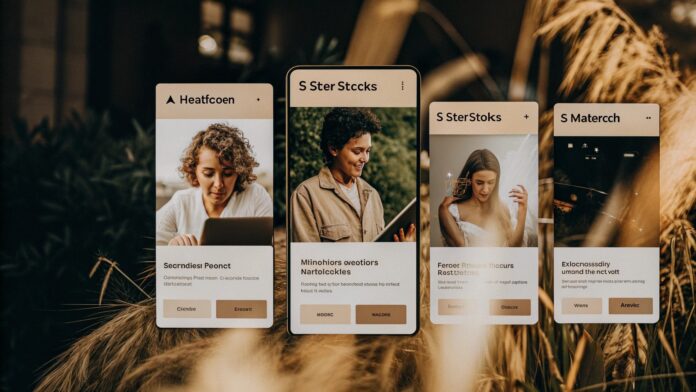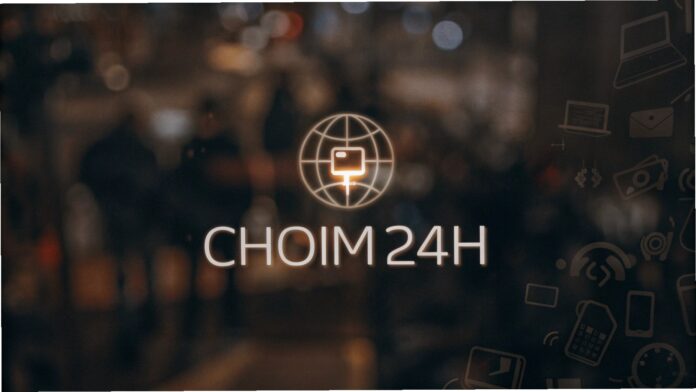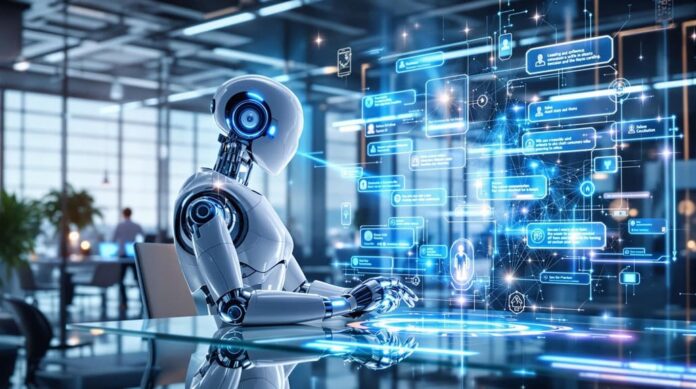In just a few short years, artificial intelligence (AI) has gone from being a futuristic concept to a powerful reality that’s transforming almost every part of our lives. Whether it’s recommending what movie to watch, helping doctors diagnose diseases faster, or improving how businesses make decisions, AI is quietly (and sometimes loudly) reshaping industries worldwide.
Let’s explore how AI is changing different industries, what opportunities it creates, and why it’s not just a tech trend—but a revolution shaping the future of work and life.
1. What Is Artificial Intelligence?
Artificial Intelligence is the ability of machines or software to mimic human thinking, learning, and problem-solving. In simple terms, it means creating computers that can “think” and “learn” from data—just like humans, but often faster and more accurately.
AI uses technologies like:
- Machine Learning (ML): Systems that learn from data and improve over time.
- Natural Language Processing (NLP): Helps computers understand and respond to human language.
- Computer Vision: Enables machines to interpret images and videos.
- Robotics: Uses AI to automate physical tasks in manufacturing, healthcare, and more.
These technologies are now the driving force behind many industries’ transformations.
2. AI in Healthcare: Smarter Diagnosis and Personalized Treatment
Healthcare is one of the biggest winners of the AI revolution. Doctors and hospitals are now using AI to diagnose diseases faster and more accurately than ever before.
For example, AI algorithms can detect cancer in X-rays or MRIs long before symptoms appear. Tools like IBM Watson Health analyze massive amounts of patient data to help doctors choose the best treatments.
AI also supports personalized medicine, where treatment is tailored to each person’s genetic makeup and lifestyle. This makes care more effective and reduces trial-and-error methods.
Even in mental health, AI chatbots can offer support and detect early signs of depression or anxiety through conversation patterns.
In short, AI is helping healthcare become faster, smarter, and more human-centered.
3. AI in Business and Finance: Making Smarter Decisions
Businesses are using AI to analyze data, predict trends, and make better decisions. In finance, AI is helping banks detect fraud, assess credit risk, and even guide investment strategies.
Chatbots and virtual assistants are also transforming customer service by providing instant responses 24/7. For example, if you contact your bank or an online store, chances are your first interaction is with an AI-powered assistant that can help you almost like a human.
AI also supports predictive analytics, helping companies forecast demand, manage inventory, and plan marketing campaigns more efficiently.
In short, AI is helping businesses save time, cut costs, and deliver better experiences to customers.
4. AI in Manufacturing: The Age of Smart Factories
Factories are no longer places filled only with machines and workers—they’re becoming smart factories powered by AI.
AI systems monitor equipment in real time to predict when a machine might break down, reducing costly downtime. Robots equipped with AI can assemble products with extreme precision, while sensors and cameras ensure high quality at every step.
AI is also helping manufacturers optimize energy use and reduce waste, leading to more sustainable operations.
This combination of robotics, automation, and AI is often called Industry 4.0—the fourth industrial revolution—and it’s making production faster, safer, and smarter.
5. AI in Retail: Personalization and Smarter Shopping
Ever noticed how online stores seem to “know” what you want to buy next? That’s AI in action.
E-commerce platforms like Amazon and Shopify use AI to recommend products based on your past behavior, searches, and preferences. This personalized shopping experience not only increases sales but also makes the customer feel understood.
AI also helps retailers manage stock, predict which items will be popular, and even set prices dynamically based on demand.
In physical stores, AI-powered cameras can monitor customer behavior, while chatbots provide real-time assistance. The result is a smoother, smarter, and more enjoyable shopping experience.
6. AI in Education: Personalized Learning for Every Student
Education is being transformed by AI-powered platforms that adapt to each student’s learning pace and style.
Instead of one-size-fits-all teaching, AI tools can identify where a student struggles and adjust lessons accordingly. Platforms like Duolingo or Khan Academy use AI to personalize learning paths, making education more interactive and effective.
Teachers are also benefiting. AI can handle administrative tasks like grading and attendance, allowing educators to focus more on teaching and mentoring.
In the future, AI may even help design curriculums that evolve based on job market trends, ensuring students learn the skills they’ll actually need.
7. AI in Transportation: Towards a Driverless Future
AI is steering the transportation industry toward automation and safety. Self-driving cars, drones, and delivery robots are already being tested worldwide.
AI helps vehicles “see” and interpret their surroundings, make split-second decisions, and avoid accidents. Companies like Tesla, Waymo, and Uber are investing billions in autonomous driving technologies.
AI also optimizes traffic flow in smart cities, reducing congestion and fuel consumption. Airlines use AI to plan routes efficiently, while shipping companies use it to track goods and predict delays.
This shift promises safer roads, cleaner air, and more efficient logistics.
8. AI in Entertainment: Creativity Meets Technology
Even creative industries are being reshaped by AI. Music platforms use AI to recommend songs you’ll love. Filmmakers use AI tools for editing, visual effects, and even writing scripts.
In gaming, AI creates more realistic opponents and environments that adapt to player behavior. Artists are experimenting with AI to create digital art, blending human creativity with machine precision.
While some fear AI might replace human creativity, it’s more accurate to say it enhances it—giving artists and creators new tools to express themselves.
9. The Challenges and Concerns of AI
Despite its many benefits, AI also raises important questions.
- Job Losses: Automation could replace some human roles, especially repetitive ones.
- Bias in AI: If the data used to train AI is biased, the results can be unfair.
- Privacy: AI systems often rely on large amounts of personal data, raising privacy concerns.
- Ethics: Who is responsible when an AI makes a mistake—like in self-driving car accidents?
To manage these challenges, governments and organizations are developing AI ethics guidelines to ensure technology is used responsibly and transparently.
10. The Future of AI: Collaboration, Not Competition
AI is not here to replace humans—it’s here to work with us. The most successful future will be one where humans and machines collaborate.
AI will handle repetitive and data-heavy tasks, freeing people to focus on creativity, empathy, and strategy. In this sense, AI isn’t stealing jobs—it’s changing them, creating new opportunities for those who learn to use it wisely.
The key is not to fear AI, but to understand it and adapt to the new ways it’s reshaping our world.
Conclusion
Artificial Intelligence is not just a technological upgrade—it’s a revolution that’s touching every part of modern life. From hospitals to classrooms, factories to finance, AI is making things faster, smarter, and more personalized.
The future belongs to those who embrace this change with curiosity, creativity, and an open mind. AI may be made by humans, but it’s also helping us become more capable, efficient, and connected than ever before.
Frequently Asked Questions (FAQs)
1. What industries are most affected by AI?
AI is transforming almost every industry, but the biggest impacts are seen in healthcare, finance, manufacturing, education, retail, and transportation.
2. Will AI take away human jobs?
AI may replace repetitive or routine jobs, but it also creates new roles that require human creativity, decision-making, and emotional intelligence.
3. How is AI used in everyday life?
You already use AI daily—voice assistants like Siri or Alexa, recommendation systems on Netflix, online chatbots, and even spam filters in your email.
4. What are the main challenges of AI?
Major challenges include data privacy, algorithmic bias, ethical decision-making, and ensuring humans remain in control of AI systems.
5. What is the future of AI?
The future of AI lies in collaboration between humans and machines—where technology enhances human potential rather than replacing it.



